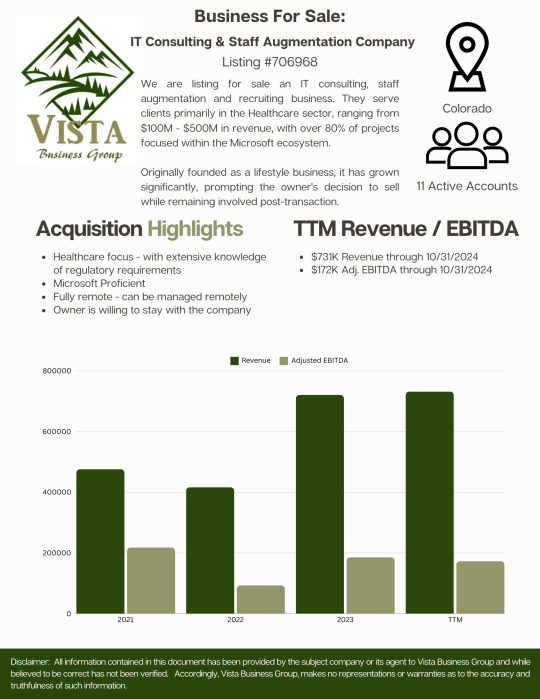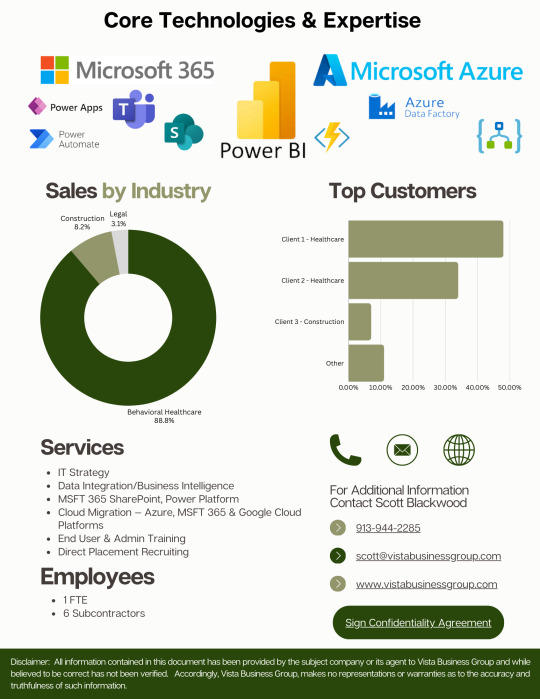#Azure Cloud Strategy
Explore tagged Tumblr posts
Text
The Best Microsoft Azure Cloud Consulting Services
Goognu offers user-friendly Microsoft Azure Cloud Consulting Services to help businesses harness the full potential of the Azure cloud platform. Our expert team simplifies the complexities of Azure, guiding you through implementation, optimization, and leveraging Azure's extensive capabilities to drive innovation, scalability, and cost-efficiency.
#Microsoft Azure Cloud Consulting#Azure Cloud Strategy#Azure Architecture Design#Azure Migration#Azure Deployment#Azure Optimization
0 notes
Text
Top 10 Steps for a Successful Azure Cloud Migration

Migrating to the cloud isn’t just a technological upgrade—it’s a strategic move that can redefine how your business operates. Among cloud platforms, Microsoft Azure stands out for its scalability, security, and enterprise-grade capabilities. However, to fully realize the benefits, a structured and well-executed migration is critical. Whether moving a single application or your entire data center, following a step-by-step approach ensures a smooth, secure, and cost-effective transition.
Here are the top 10 steps for a successful Azure cloud migration.
1. Define Clear Business Objectives
Before any technical planning begins, you must identify why you're migrating to Azure. Are you aiming to reduce infrastructure costs? Improve scalability? Enhance security and compliance? Increase application performance?
Establishing clear goals ensures that every step of your migration aligns with business needs. These objectives will guide decision-making, from the workloads you prioritize to the services you adopt on Azure.
Key Questions to Ask:
What are the primary business drivers for cloud adoption?
How will success be measured post-migration?
2. Assess Your Current Infrastructure
An in-depth assessment of your existing on-premises environment is the foundation of a smooth migration. Azure provides tools like Azure Migrate to evaluate your servers, applications, databases, and virtual machines.
This assessment phase includes:
Inventorying assets and dependencies
Evaluating performance and usage patterns
Identifying applications that are cloud-ready vs. those needing re-architecture
This helps categorize workloads for rehost (lift-and-shift), refactor, or rebuild, which informs your migration strategy.
3. Build a Strategic Migration Plan
Once you understand your environment, the next step is to create a detailed migration roadmap. This plan outlines the timeline, scope, resources, and risk mitigation strategies.
Your migration strategy may include:
Lift-and-shift for simpler workloads
Re-platforming for moderate changes
Refactoring or rearchitecting for modernization
Break the process into phases (e.g., pilot, core infrastructure, non-critical, critical apps) and prioritize based on business value and complexity.
4. Get Stakeholder Buy-In
A successful cloud migration involves more than just the IT team. Ensure key stakeholders across departments are informed and on board with the migration plan. This includes executives, finance teams, department heads, and even end-users.
Conduct workshops or planning meetings to:
Address concerns or resistance
Align timelines and expectations
Establish communication and training plans
Stakeholder alignment helps reduce disruptions and facilitates smoother adoption of cloud-based systems.
5. Set Up Your Azure Environment
Before moving workloads, you’ll need to configure your target Azure environment. This includes:
Creating Azure subscriptions and resource groups
Defining naming conventions, tags, and access controls
Setting up virtual networks (VNets), subnets, and NSGs for secure connectivity
Choosing the right regions and availability zones
Also, identity and access management (IAM) should be integrated using Azure Active Directory, and governance policies should be implemented to maintain security and compliance.
6. Optimize for Cost and Performance
Cloud cost optimization starts before migration. Azure offers cost calculators and the Azure Pricing Calculator to estimate future expenses. During this stage:
Right-size virtual machines based on performance data
Evaluate pricing models (Pay-As-You-Go vs Reserved Instances)
Use Azure Hybrid Benefit if you have existing Windows Server or SQL licenses
Identify opportunities to decommission or consolidate underutilized assets
Cost-efficient planning avoids unexpected billing shocks after migration and ensures long-term ROI.
7. Migrate in Phases
Rather than moving everything at once, a phased migration approach allows for better control and lower risk. Start with a pilot migration—select non-critical workloads to test your tools, processes, and team coordination.
Post-pilot, group workloads into categories such as:
Low-complexity apps that can be quickly rehosted
Medium-complexity apps requiring moderate refactoring
High-priority apps that may need modernization
Tools like Azure Site Recovery, Azure Database Migration Service, and Azure Data Box can assist with the actual data and workload transfer.
8. Monitor and Test Extensively
Once workloads are moved to Azure, thorough testing is essential to ensure functionality, performance, and security. Use both manual and automated testing to validate:
Application responsiveness
Data integrity
Network connectivity
Access permissions
Implement Azure Monitor, Log Analytics, and Application Insights to track performance metrics, detect anomalies, and troubleshoot issues.
Make sure to conduct user acceptance testing (UAT) with stakeholders to confirm that migrated applications work as expected in the new environment.
9. Secure Your Cloud Environment
Security must be embedded at every step of the migration process. Post-migration, Azure offers a range of tools to enhance your security posture:
Azure Security Center for threat detection and recommendations
Azure Policy to enforce governance across resources
Azure Key Vault to store and manage secrets, keys, and certificates
Microsoft Defender for Cloud to protect workloads from threats
Also, ensure that your backup and disaster recovery plans are in place using tools like Azure Backup and Azure Site Recovery.
10. Train Teams and Embrace Continuous Improvement
After the migration, the focus should shift to optimizing, training, and evolving your Azure environment. Upskill your IT team with Azure certifications and documentation. Conduct training sessions to ensure departments are comfortable using new tools and services.
Regularly revisit:
Performance metrics
Cost reports
Security alerts
Compliance requirements
Encourage a culture of continuous improvement by refining cloud usage, adopting new Azure capabilities, and staying updated with Microsoft’s innovations.
Final Thoughts: The Journey Doesn’t End at Migration
Migrating to Azure is not a one-time project—it’s an ongoing journey toward digital transformation. Done right, it offers benefits like agility, scalability, reduced operational costs, and improved innovation.
However successful migration demands meticulous planning, strong leadership, and a commitment to cloud governance post-deployment.
Whether you're a mid-sized business looking to optimize costs or an enterprise embracing digital acceleration, these 10 steps serve as a reliable blueprint for making your Azure migration a success.
#cloud migration services#azure cloud solution#azure cloud migration#azure migration services#microsoft azure migration#azure migration strategy#cloud migration services companies
0 notes
Text

5 Key Benefits of Azure Cloud Migration Services
Migrating to the cloud is no longer optional — it's essential. This infographic highlights the top 7 benefits of using Azure Cloud Migration Services for modern businesses. From cost optimization and enhanced security to faster deployment and improved scalability, Microsoft Azure provides a flexible, secure, and efficient platform for digital transformation.
Discover how Azure helps streamline your IT infrastructure while improving business continuity and integration with existing Microsoft tools. Whether you're planning a full migration or hybrid setup, these insights will help you understand why Azure is the platform of choice.
#Azure Cloud#Cloud Migration#Azure Migration Services#Microsoft Azure#Cloud Computing#IT Modernization#DevOps#Cloud Strategy
0 notes
Text
#Mobile App Development Company near me#Mobile App Development Company#software development company in india#Cloud Consulting Services in Noida#Cloud Consulting Services#app development in noida#software development company in noida#custom software development company in noida#ios app development company in noida#AWS Cloud Services#Best Service cloud consulting providers#Microsoft Azure cloud consulting services#Cloud Consulting Services India#Amazon Cloud Consulting Services#Cloud Software Consulting Services#Devops consulting and managed cloud services#AWS cloud consulting services#Cloud Managed Services#Cloud Strategy & Consulting Service#Cloud Services#Cloud Consulting Services in India#Cloud Consulting Services & Solutions#Best software development company#Best software development company in noida#Custom Flutter App Development Company#mobile app development company near me#app development companies near me#app development company near me#mobile app development company#app development companies
0 notes
Text
#AWS to Azure Migration#Cloud Migration Strategies#Azure Migration Tools#Cloud Computing#DevOps#Cloud Cost Optimization
0 notes
Text

#drawing up plans (ooc)#enacting strategy (ic)#a request for you (inbox)#dreams of a throne (musings)#paralogue start (open starter)#colosseum games (dashboard games)#tomes from the library (rp meme)#fodlan winds (White Clouds)#a funeral of flowers (Silver Snow)#apex of the world (Azure Moon)#the edge of dawn (Crimson Flower)#between heaven and earth (Verdant Wind)#carnal sin (nsfw)
0 notes
Text
Techjour can provide devops architect and engineer for your prominent Project OR Client. we can also offer you support and consulting.
DevOps team reduces your server cost by integrating tools, deliver scalable application and optimise your business processes.
#techjour#automation#startup#aws cloud#aws#gitlab#google cloud#microsoft azure#technology#devopsengineer#devops#gcp cloud consulting services#strategy consulting#saas development#devopstools#devsecops#hire developers
0 notes
Text
How to Build an Effective Cloud Organization
#ai#azure#Cloud#Cloud Architecture#Cloud Operating Model#cloud-computing#Enterprise Architecture#IT Strategy#Michael Griffin#Solution Architecure#technology
0 notes
Text


🔥NEW LISTING🔥 *** IT CONSULTING & STAFF AUGMENTATION COMPANY FOR SALE *** We are listing for sale an IT consulting, staff augmentation and recruiting business. They serve clients primarily in the Healthcare sector, ranging from $100M - $500M in revenue, with over 80% of projects focused within the Microsoft ecosystem. Originally founded as a lifestyle business, it has grown significantly, prompting the owner's decision to sell while remaining involed post-transaction. Location - Colorado Acquisition Highlights: ▪ Healthcare focus - with extensive knowledge of regulatory requirements ▪ Microsoft Proficient ▪ Fully remote - can be managed remotely ▪ Owner is willing to stay with the company TTM Revenue / EBITDA: ▪ $731K Revenue through 10/31/2024 ▪ $172K Adj. EBITDA through 10/31/2024 If you would be interested in learning more about this opportunity please contact Scott Blackwood at [email protected] for more information.
#it#information technology#it consulting#staff augmentation#staffing#itstaffing#recruiting#healthcare sector#microsoft#it strategy#dataintegration#businessintelligence#cloud migration#azure#azurecloud#microsoft azure#business#business for sale#for sale#opportunity#privateequity#mergersandacquisitions
0 notes
Text
Ensure hassle-free transitions with a robust Azure cloud migration strategy. Learn how to plan and execute migrations for long-term cloud success.
0 notes
Text
https://www.bloglovin.com/@vastedge/2025-trends-for-microsoft-azure-cloud-12827916
Explore the upcoming trends for Microsoft Azure Cloud in 2025. This blog post delves into the key developments and innovations expected to shape the Azure landscape, including advancements in AI, enhanced security features, and new service offerings. Stay ahead of the curve with insights into how these trends could impact your cloud strategy and drive future growth.
#Microsoft Azure#Cloud Trends#2025 Predictions#Cloud Computing#AI Innovations#Cloud Security#Azure Services#Technology Forecast#Digital Transformation#Cloud Strategy
0 notes
Text

Azure Cloud Migration Services Companies & Solution Brisbane AU
Transform your business with expert Azure cloud migration services. Get tailored migration strategies and solutions to ensure a smooth transition to Microsoft Azure for optimal performance. Seamlessly migrate your workloads to Microsoft Azure with expert cloud migration services. Improve scalability, security, and performance while reducing IT costs.
#cloud migration services#azure cloud solution#azure cloud migration#azure migration services#microsoft azure migration#azure migration strategy#cloud migration services companies
0 notes
Text
Skyrocket Your Efficiency: Dive into Azure Cloud-Native solutions
Join our blog series on Azure Container Apps and unlock unstoppable innovation! Discover foundational concepts, advanced deployment strategies, microservices, serverless computing, best practices, and real-world examples. Transform your operations!!
#Azure App Service#Azure cloud#Azure Container Apps#Azure Functions#CI/CD#cloud infrastructure#cloud-native applications#containerization#deployment strategies#DevOps#Kubernetes#microservices architecture#serverless computing
0 notes
Text
#Cloud Consulting Services & Solutions#Cloud Services#Cloud Consulting Services#Cloud Consulting Services in India#Cloud Strategy & Consulting Service#Cloud Managed Services#AWS cloud consulting services#Devops consulting and managed cloud services#Cloud Software Consulting Services#Amazon Cloud Consulting Services#Cloud Consulting Services India#Microsoft Azure cloud consulting services#Best Service cloud consulting providers#AWS Cloud Services#Mobile App Development Company near me#Mobile App Development Company#software development company in india#Cloud Consulting Services in Noida#app development in noida#software development company in noida#custom software development company in noida#ios app development company in noida
0 notes
Text
Know about Types of Cloud Migration
#Cloud Migration#Cloud Migration Services#Cloud Migration Strategies#Cloud Technology#Azure Cloud Migration
0 notes
Text
The Journey to Azure Cloud Migration: Simplified
Why Migrate to the Cloud?The drive towards cloud computing comes from the desire to reduce costs associated with traditional data centers, such as real estate, power, servers, storage, and networking. Cloud migration has seen a surge in recent years due to its promise of cost efficiency, scalability, security, and the ability to leverage cutting-edge technologies like AI, PaaS-based services, and…

View On WordPress
0 notes